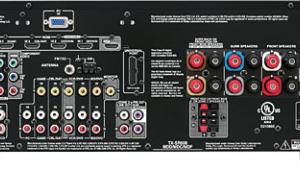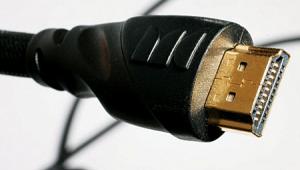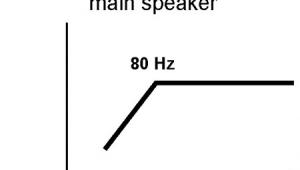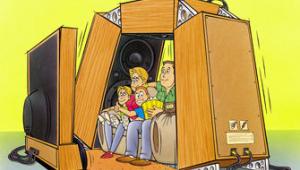High-Definition Audio
For all the dramatic improvements they’ve given us in the picture and sound quality of movie playback in our homes, sometimes it feels like the new high-definition disc formats—both Blu-ray and HD DVD—also make our lives needlessly complicated in some respects. Case in point is the process of getting high-resolution surround sound audio from the disc player to an A/V receiver or processor. Let’s be frank here and admit that, in this regard, things were a lot simpler with standard DVD, where there was far less confusion about the different audio formats and hardware hookup requirements.
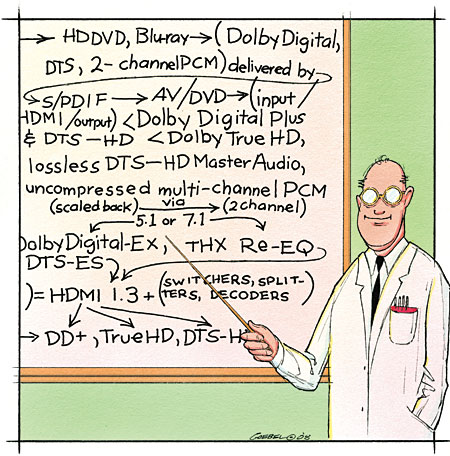
With a DVD, your movie soundtrack almost always comes in either the Dolby Digital or DTS format. Once in a blue moon, you might find a two-channel PCM track, but those are few and far between and generally relegated to concert and music programs. For any of these options, the most straightforward method of transferring the audio data from the disc player is to connect a simple S/PDIF cable, which will transmit the digital stream to your A/V receiver or pre/pro for decoding, digital-to-analog conversion, and amplification out to your speakers. Newer DVD players may have an HDMI output that can perform the same task, provided that your receiver has an HDMI input that will accept audio.
Some players offer audio decoders and DACs within the DVD player itself for sound output over multichannel analog connections. But many enthusiasts feel that these decoding and audio processing tasks are best handled by dedicated audio equipment. A single digital connection also creates far less clutter.
Transmitting the audio from a DVD isn’t too terribly complex a procedure. Nonetheless, things are decidedly trickier now that we’ve moved on to the next generation of video disc technology. To go with their high-definition pictures, Blu-ray and HD DVD deliver high-resolution sound that far surpasses the sound quality we’ve experienced with DVD. To achieve that goal, both formats offer a multitude of audio options, broken down into three tiers of potential sound quality. On the lowest rung are the familiar Dolby Digital and DTS codecs carried over from the DVD era, whose workings are pretty much the same as before. Above this are the new Dolby Digital Plus and DTS-HD High Resolution formats, which are both lossy compression schemes using more efficient encoding techniques to maintain a higher fidelity to the source. Finally, in the top tier, we have lossless Dolby TrueHD, lossless DTS-HD Master Audio, and uncompressed multichannel PCM, all capable of providing audio that’s bit-for-bit identical to the studio master.
Less compression and higher fidelity are, of course, welcome improvements, but how do we move these new sound formats out of the disc player and into the A/V receiver or pre/pro? For basic Dolby Digital and DTS, not much has changed; a simple S/PDIF connection will still work perfectly fine. Unfortunately, when it comes to any of the new high-resolution codecs, S/PDIF is no longer sufficient due to its lack of bandwidth and copy protection protocols. When playing tracks encoded with Dolby Digital Plus, Dolby TrueHD, and both types of DTS-HD, all you’ll hear from the coaxial or TosLink output of your Blu-ray or HD DVD player will be standard Dolby Digital or DTS, which is reduced in quality compared with the new advanced codecs. Uncompressed 5.1- or 7.1-channel PCM soundtracks will maintain their same level of fidelity (being uncompressed in nature) but must be scaled down to only two channels. Obviously, none of these is an ideal outcome.
So, how do we transmit these audio formats at full resolution? Either multichannel analog or HDMI. Either connection type will work adequately for an uncompressed PCM soundtrack, which can be carried over any version of HDMI without issue or can be converted to analog in the player. However, there are some important caveats, especially when dealing with the new Dolby and DTS codecs.
Assuming that the disc player has multichannel analog outputs (the PlayStation 3 and several HD DVD models do not), this option will work only if the player has the proper audio decoders for the new formats on board. All HD DVD players have Dolby Digital Plus 5.1 decoding capability and Dolby TrueHD decoding of at least two channels. (The majority of HD DVD players will decode Dolby TrueHD 5.1.) At press time, however, no HD DVD player offers DTS-HD High Resolution or Master Audio decod- ing. Instead, a disc encoded with one of those formats (e.g., the Master Audio track on Pan’s Labyrinth) will have only its standard DTS core decoded and output.
On the Blu-ray side, high- resolution audio decoding is strictly optional. Some Blu-ray players can decode DD+, TrueHD, and DTS-HD High Resolution; but as we go to press, none yet handle Master Audio. (As with HD DVD, only the standard DTS core is extracted.) Other Blu-ray players may not decode any of these formats at all, restricted once again to standard Dolby Digital or DTS quality over the analog outputs.
The other drawback to using analog connections is that your sound quality will be limited by the quality of the decoders, audio processors, and DACs inside the disc player. As I mentioned earlier, many critical listeners prefer that all processing and digital-to-analog conversion be done in a dedicated A/V receiver or pre/pro, which may have superior audio components. Many disc players have limited or inadequate speaker-delay (distance), channel-level, and bass-management controls. Moving all decoding to the A/V receiver or pre/pro prevents this problem, and it also allows additional post-processing such as Dolby Digital EX and DTS-ES matrixing for deriving center rear or surround back channels from 5.1 soundtracks, or THX Re-EQ for tempering the brightness of high-frequency information. None of those functions are available in a disc player. To apply them, you’ll need to send a digital signal to the receiver or pre/pro, which means an HDMI connection for high-resolution formats.
In an ideal scenario, HDMI is the preferred method of transmitting high-resolution movie audio. It requires only a single cable and puts complete control of the signal in the receiver or pre/pro. Unfortunately, if that sounds simple enough, the reality adds some kinks.
It turns out that you can’t transmit the native digital bitstreams for DD+, TrueHD, or DTS-HD over just any HDMI connection. Specifically, you must have HDMI 1.3 terminals on both the disc player and the receiver or pre/pro, and, of course, the receiver must be a model that includes decoders for those formats. If any of those criteria aren’t met, you can’t output the native bitstream. Instead, you must rely on the disc player to decode the audio to multichannel PCM, transferable over any version of HDMI, after which the receiver or pre/pro performs all of its digital processing and digital-to-analog conversion and amplification. While there is no theoretical loss in resolution in the conversion to PCM, this is a viable option only if the player has all of the proper advanced audio decoding on board, and, as I noted earlier, not all models do. Failing that, we’re back to standard Dolby Digital or DTS quality.
Now, let’s say that you make sure to buy a Blu-ray or HD DVD player with an HDMI 1.3 output, as well as a new receiver or pre/pro with an HDMI 1.3 input and all of the necessary high-resolution audio decoders. You should be all set, right? Well, almost. You also need to verify that the disc player—even one with an HDMI 1.3 output—is configured for the transmission of a high-rez audio native bitstream. For example, Sony’s PlayStation 3 console technically has an HDMI 1.3 connection but does not transmit DD+, TrueHD, or DTS-HD in their native bitstream forms without conversion to PCM first—and it won’t currently decode DTS-HD MA to PCM at all [Update: since this piece was written the PS3 has been updated and now does decode DTS-HD Master Audio to PCm. -Ed.]. This high-rez audio bitstreaming feature may be called High Bit Rate Audio Streaming, Direct Digital Audio Mode, or some similar name, depending on the manufacturer.
Only after you’ve cleared all of these hurdles can you feel reasonably assured that you’re covered in any eventuality. Whether a disc has a Dolby Digital Plus, Dolby TrueHD, DTS-HD High Resolution, DTS-HD Master Audio, or PCM soundtrack, you should have the ability to transmit the audio to your receiver at full resolution.
Even so, there’s yet another wrinkle to consider. The downside to sending the advanced codec’s native bitstream to a receiver or pre/pro is that you can only send the movie soundtrack itself. Any secondary content, like menu beeps or the audio that accompanies Picture-in-Picture interactive features is not part of the original bitstream and will not be transmitted. (Audio commentaries and alternate-language tracks may also be affected, depending on how the disc was authored.) I doubt that many will miss the menu beeps, but the lack of PiP audio can be problematic. The only way to send that additional content is to allow the disc player to perform the audio decoding itself, during which it will live-mix in the new material on top of the movie soundtrack, for transmission in either PCM or analog format. In some cases, you may lose the high-resolution or lossless nature of the soundtrack. If you’re watching the movie with the bonus features enabled, that may not be a big concern, as long as you can restore the full quality when you watch just the movie itself. To that end, switching this Direct Digital Audio Mode on and off usually requires you to stop disc playback to visit the player’s setup menu, and that can be a real nuisance.
The benefits of Blu-ray and HD DVD greatly outweigh the inconveniences of their design implementations, but no one can deny that both products have taken a step back from the simplicity of DVD in some areas of owner usability. The new audio formats and their hardware requirements remain a major source of buyer confusion. This certainly hasn’t helped either disc format’s adoption rate with the general public, who expect a next-generation product to be more streamlined and easier to use than its predecessors. We can only hope that these issues will eventually get ironed out as new player models are released. (It’s frankly inexcusable that not all players have HDMI 1.3 outputs yet.) In the meantime, it may be a bit of a hassle to get the best audio quality out of an HD DVD or Blu-ray player. Fortunately, the end results are worth it.
- Log in or register to post comments
